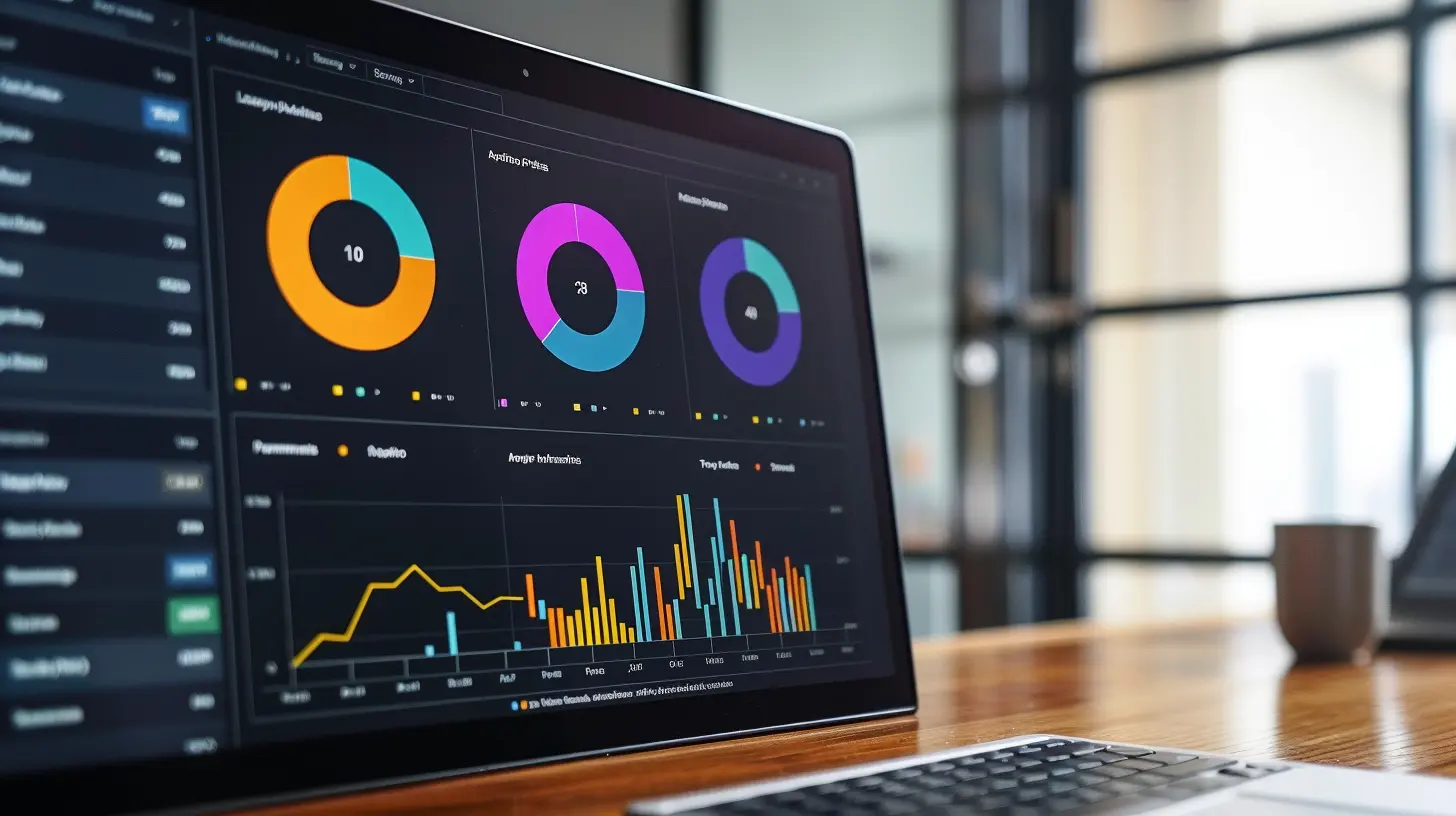How to Use Data Analytics to Personalize Your Performance Management
16 August 2025
Performance management—let's be honest—can feel like a dreaded must-do. It's often overly formal, outdated, and doesn't do much to spark real change or motivation. But what if we could flip the script? What if we could tailor performance management to each individual, turning it into something useful and even empowering?
That’s where data analytics comes in.
Gone are the days of one-size-fits-all performance reviews. Today, we're diving deep into how data can revolutionize the way we manage and motivate our teams. And no, you don't need to be a data scientist to make it work.
Let’s get into how you can use data analytics to personalize your performance management approach and create a workplace where everyone can thrive.
Why Traditional Performance Management Falls Short
Before we get into analytics, let’s talk about what’s broken. Imagine trying to paint an entire house with one color because someone decided it works for most people. That’s what traditional performance reviews do.- Annual reviews feel like looking in the rearview mirror.
- Generic feedback doesn't move the needle for individuals.
- Top-down evaluations miss the full picture.
It’s impersonal, inconsistent, and often irrelevant. It’s like using a flashlight when what you really need is a floodlight.
So, what’s the alternative?
Data Analytics: Your New Best Friend in Talent Management
Data analytics isn’t just for the IT crowd anymore. With the right tools, you can gain key insights into employee behavior, performance, engagement, and even potential. Think of it as using a GPS instead of a paper map—it helps you navigate faster, smarter, and with fewer wrong turns.What Exactly Is Data Analytics in HR?
Let’s break it down. Data analytics in HR is about collecting and examining data to make better people decisions.It can include data from:
- Performance metrics
- Employee engagement surveys
- Attendance records
- Project outcomes
- Peer feedback
- Learning and development progress
All of this data is like puzzle pieces. When you put them together, you get a clear picture of each employee’s strengths, weaknesses, motivations, and opportunities.
The Power of Personalization in Performance Management
Now here's where the magic happens. Personalization means tailoring the performance management process to each person’s unique skills, goals, and working style.It’s the difference between buying a suit off the rack versus getting one custom tailored. Sure, both are clothes—but one fits like a glove.
When you personalize performance management:
- Employees feel seen and valued.
- Managers can provide more relevant feedback.
- Development plans become more effective.
- Retention rates improve dramatically.
And let’s be real—people don’t leave companies. They leave bad managers and generic systems that don’t support their growth.
How to Start Using Data Analytics to Personalize Performance Management
Okay, so how do we actually make this happen? Let’s break it down into manageable steps.1. Identify the Right Data Points
Start small. You don’t need a massive dashboard to get value.Here are some good data points to begin with:
- Output metrics: Sales numbers, project completion rates, customer feedback, quality scores.
- Behavioral data: Time spent on tasks, collaboration frequency, meeting participation.
- Engagement indicators: Pulse survey results, turnover risk scores, learning module completions.
Pull data from tools you already use—like your CRM, project management tools, HRIS, and communication platforms.
> Tip: Don’t collect data just for the sake of it. Be intentional. Ask yourself, “How will this help me support this person better?”
2. Segment Employees Based on Patterns
Look for trends and group people based on performance traits.For example:
- High performers with low engagement
- Consistent contributors needing skill development
- New hires showing high potential
These segments can help you personalize your performance strategies. It’s kind of like marketing personas—but for your workforce.
3. Set Personalized Goals and KPIs
Everyone’s job is different, so their goals should be too.Use your data to create SMART (Specific, Measurable, Achievable, Relevant, Time-bound) goals that reflect:
- Their role
- Their career aspirations
- Their current level of performance
- The business goals
No more cookie-cutter objectives. Make your goals real, reachable, and relevant.
4. Customize Feedback and Coaching
Have you ever received feedback that made you go, “…wait, what?” That’s usually a sign it wasn’t based on real data.With analytics, you can get specific:
- “Your collaboration score increased by 20% last quarter—great job building cross-team relationships.”
- “You've completed 90% of your training modules on time, but your application in projects suggests a gap we can address through mentorship.”
That kind of feedback hits differently, right?
Make coaching feel like a partnership, not a judgment.
5. Use Predictive Analytics for Development Planning
Imagine if you could predict burnout before it happens or identify your next team lead before they even ask for a promotion.That’s the power of predictive analytics.
By analyzing patterns—like declining productivity or sudden changes in engagement—you can intervene early and keep your people on track.
It’s not about being Big Brother. It’s about being a better coach.
6. Keep it Real-Time and Continuous
Annual reviews are so last decade.Real-time analytics allows you to make performance management an ongoing process. Think weekly one-on-ones, monthly check-ins, and quarterly planning.
This helps:
- Catch issues early
- Celebrate wins when they happen
- Adjust goals when things change
It’s like using a thermostat instead of waiting until your house is freezing to turn on the heat.
Tools That Can Help You Get Started
No need to reinvent the wheel. Tons of tools out there can help you integrate data analytics into performance strategy.Here are a few worth checking out:
- Lattice – Great for real-time performance tracking and engagement insights.
- 15Five – Combines goal tracking, feedback, and analytics.
- Workday – Strong reporting and predictive analytics features.
- Culture Amp – Focuses on employee experience with excellent survey analytics.
- Betterworks – Helps with aligning performance management with business outcomes.
Pick a tool that fits your team size, budget, and data needs. Start small, and build from there.
Overcoming the Challenges
We won’t sugarcoat it—using data for performance management isn’t without hurdles.Here are some common roadblocks and how to handle them:
❌ Data Overload
Too much data can be paralyzing. Start with what's actionable. Ask, “What one thing can I learn from this that would help me support someone better?”❌ Privacy Concerns
Be transparent. Tell your team what data you're collecting, why, and how it'll benefit them. Trust is key.❌ Resistance to Change
Change is hard. Frame analytics as a way to empower, not micromanage. Show the wins early and often.Real-World Outcomes: What Success Looks Like
Companies that personalize performance management using data are seeing real results:- Higher retention: Employees who feel their growth is tracked and supported are more likely to stay.
- Better productivity: Personalized goals and feedback drive better outcomes.
- More engagement: When people feel seen, they care more—plain and simple.
Think of it like having a coach who knows exactly how you work best, what motivates you, and how to push you just enough to grow. That’s the dream, right?
Final Thoughts: It’s Not About the Data—It’s About the People
Data analytics is just a tool, not the whole solution. Don’t lose sight of the human side. Use the numbers to guide conversations, not replace them.At the end of the day, personalization is about building trust, investing in people, and helping each person shine in their own way.
So, next time you think of performance management, picture it not as a dreaded review—but as a GPS that helps every team member get where they want to go, faster and smarter.
It’s not just better for them…it’s better for your business too.
all images in this post were generated using AI tools
Category:
Performance ManagementAuthor:

Lily Pacheco
Discussion
rate this article
1 comments
Amos Yates
Leveraging data analytics in performance management not only tailors employee experiences but also drives engagement and productivity. Personalization fosters a culture of growth, ensuring alignment with business objectives.
September 1, 2025 at 2:31 AM

Lily Pacheco
Thank you for your insightful comment! I completely agree—leveraging data analytics truly enhances personalization in performance management, leading to improved engagement and alignment with business goals.


